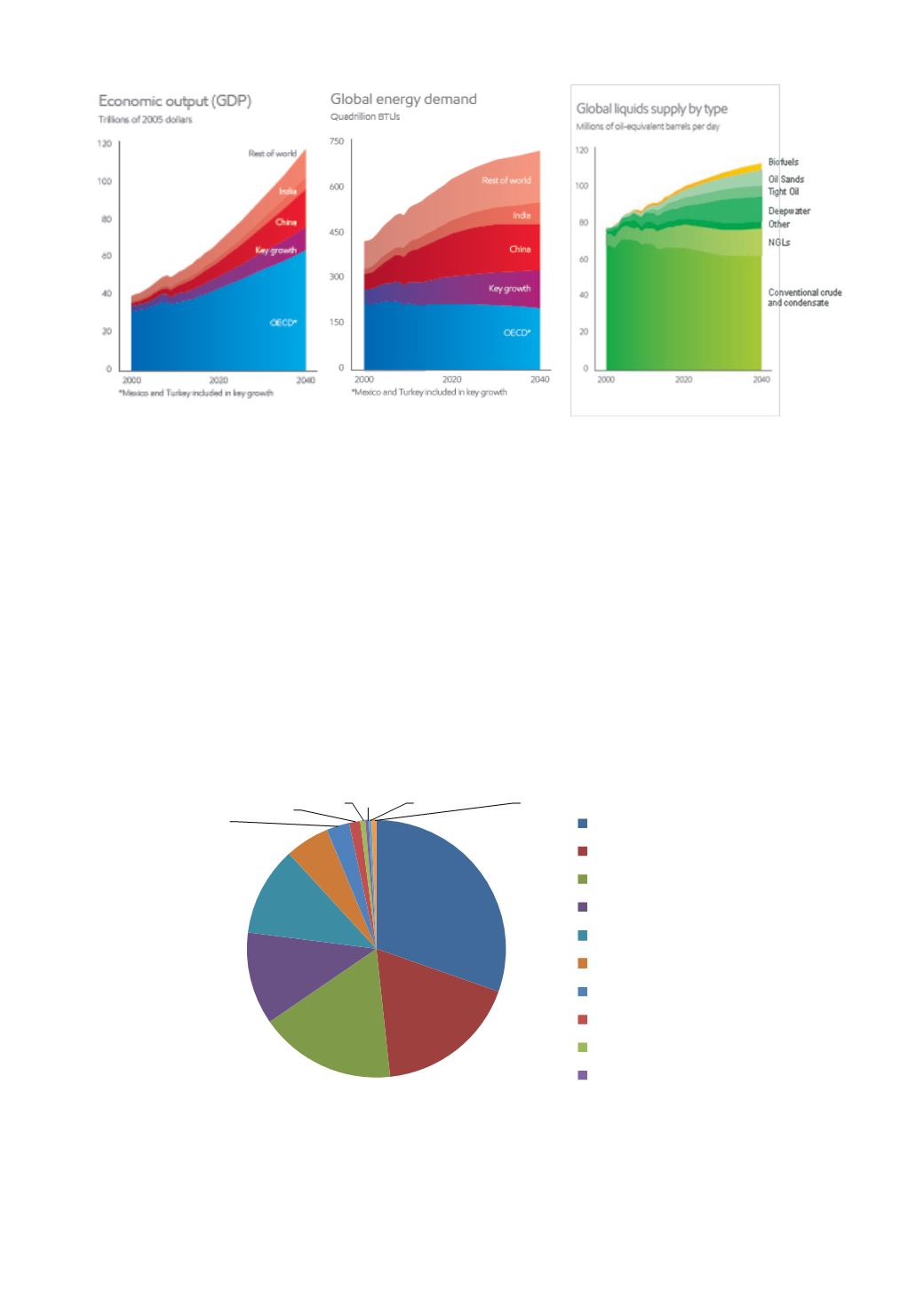
89
Source: The Outlook for Energy: A View to 2040 (ExxonMobil, 2014).
The EIA estimates global natural gas consumption will grow by 0.6% per year through 2020. The main driver behind
this growth is the increased use of natural gas in electricity generation in industrial sectors. The growth in supply due to
the US shale gas revolution is expected to keep natural gas prices below their high 2005-2008 levels through 2036.
The Oil and Gas Sector in the Group’s Countries of Operation
MENA energy sector outlook
The MENA region holds the majority of the world’s proved oil reserves and a larger portion of the world’s proved gas
reserves than any other region. The BP Statistical Review estimates that as at 31 December 2013, the MENA region had
an estimated 873.5 billion barrels (bnbbl) of proved oil reserves, representing 51.7% of the world’s total reserves, of
which 808.5 bnbbl is in the Middle East region. MENA natural gas proved reserves amounted to 3,144.3 trillion cubic
feet (88.2Tcm), representing 47.5% of the world’s total reserves, of which 2,835.4 trillion cubic feet (80.3Tcm) is in the
Middle East region.
The following is a chart showing oil reserves distribution in the MENA region as at December 2013.
30.4%
17.9%
17.1%
11.6%
11.2%
5.5%
2.9%
1.4%
0.6% 0.4% 0.3%
0.6%
Saudi Arabia
Iran
Iraq
Kuwait
United Arab Emirates
Libya
Qatar
Algeria
Oman
Egypt
Source: BP Statistical Review of World Energy (June 2014).
The following is a chart showing natural gas reserves distribution in the MENA region as at December 2013.


